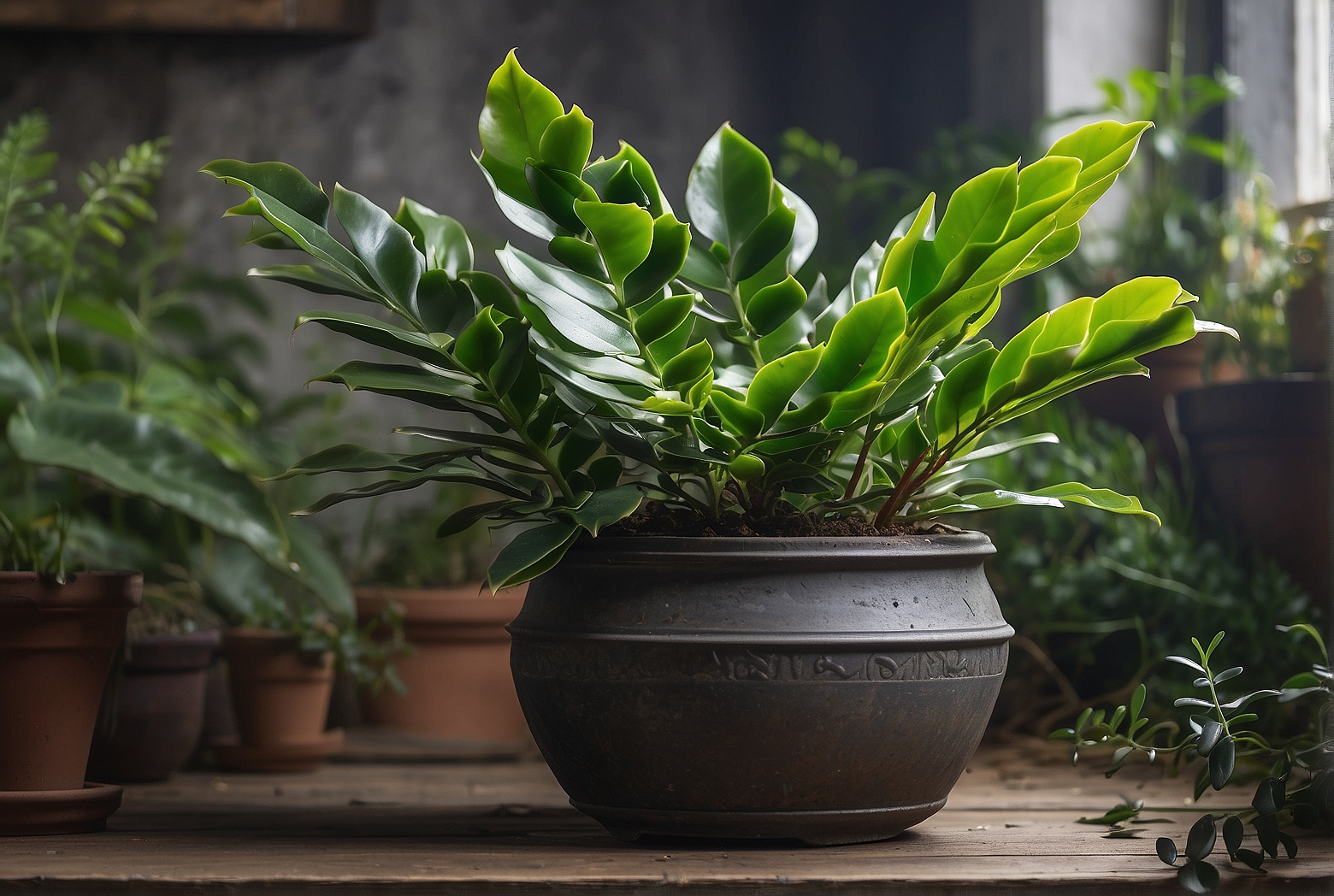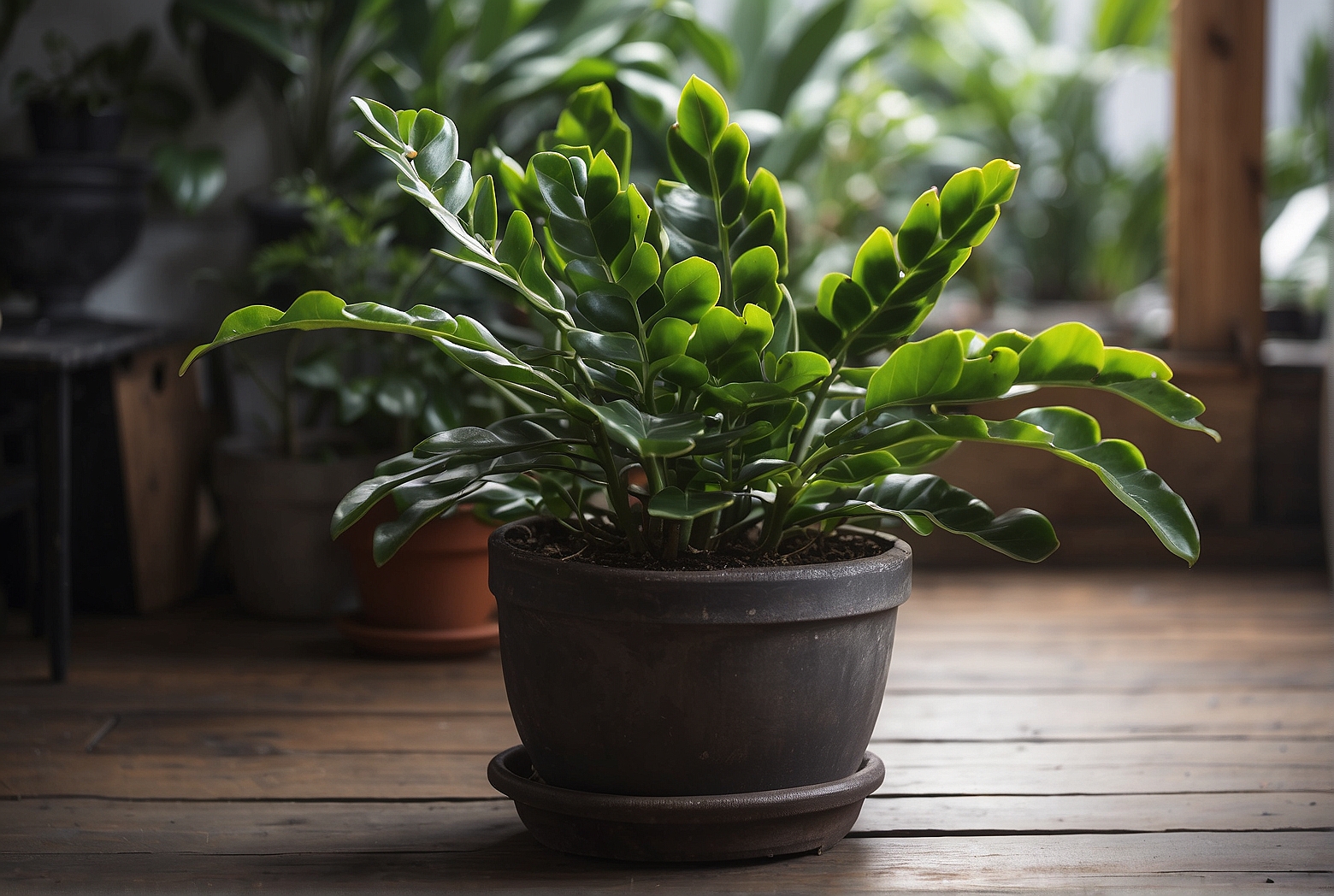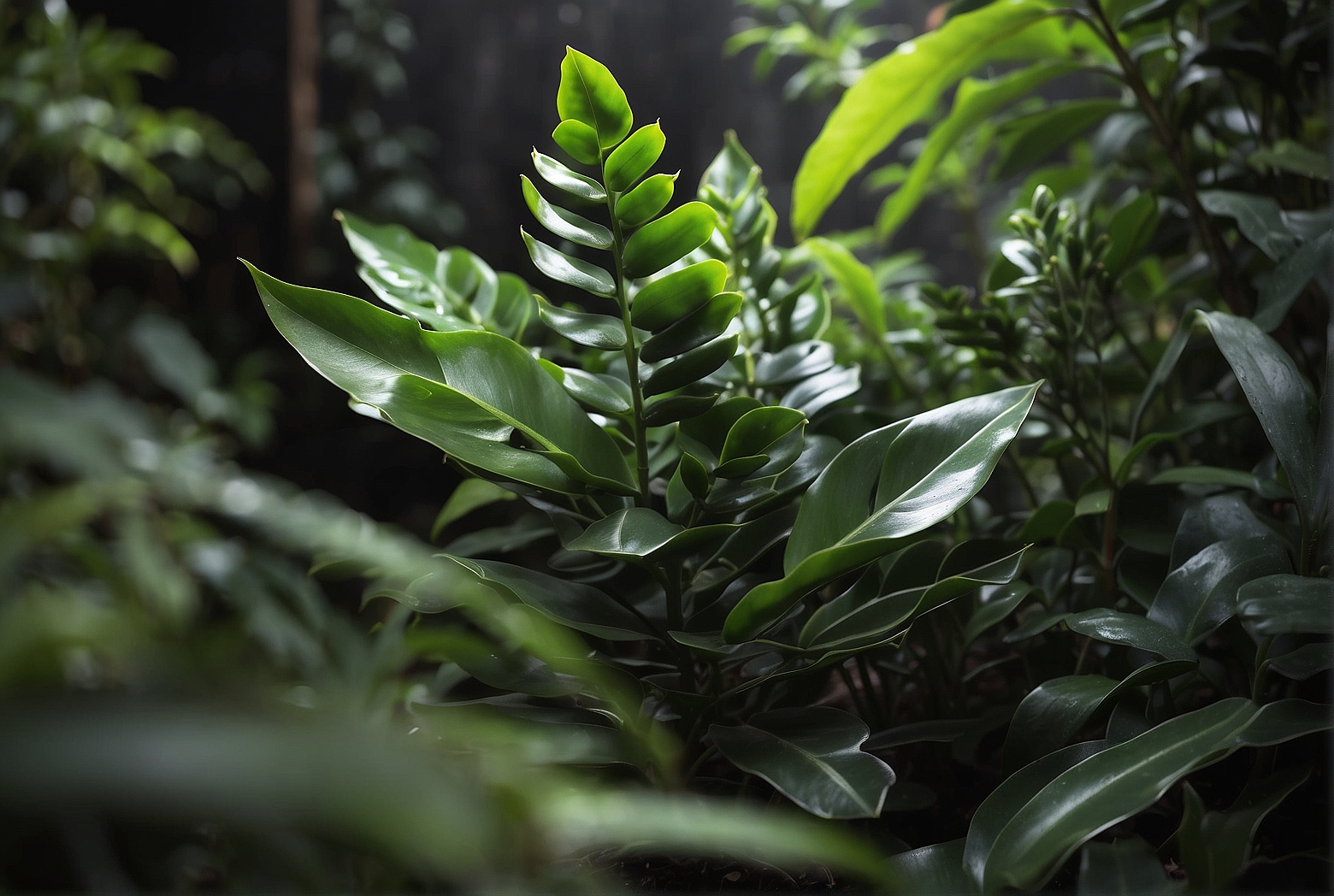Last Updated on April 1, 2024 by Tony Manhart
Have you ever wondered if the ZZ plant in your home is poisonous? If so, you’re not alone. The ZZ plant, also known as Zamioculcas zamiifolia, has gained popularity as a low-maintenance houseplant, but concerns about its toxicity have arisen. In this article, we’ll explore whether the ZZ plant is poisonous and what precautions you should take to keep your household safe. So let’s get started and find out the truth about this evergreen beauty!
Introduction
Overview of ZZ Plant
The ZZ Plant, scientifically known as Zamioculcas zamiifolia, is a popular houseplant that is native to eastern Africa. It is loved by many for its attractive glossy leaves and its ability to thrive in low-light conditions. The ZZ Plant is known for being a hardy and resilient plant, making it a favorite choice for both experienced and novice gardeners alike.
Importance of Knowing if ZZ Plant is Poisonous
While the ZZ Plant is a beautiful and versatile addition to any indoor space, it is essential to be aware of its potential toxicity. Whether you are a plant enthusiast or a pet owner, understanding the potential dangers of the ZZ Plant is crucial for the safety of both humans and animals. By familiarizing yourself with the toxicity of the ZZ Plant, you can take the necessary precautions to avoid any adverse effects and ensure a safe environment.
Toxicity of ZZ Plant
Toxic Substances in ZZ Plant
The ZZ Plant contains two primary toxic substances: calcium oxalate crystals and cycasin. These substances are naturally occurring defense mechanisms of the plant, helping to deter animals from feeding on its leaves or stems.

Calcium oxalate crystals are tiny structures that can cause skin and mucous membrane irritation upon contact. Ingestion of these crystals can lead to severe irritation and swelling of the throat, mouth, and digestive tract.
Cycasin, on the other hand, is a compound found in the roots of the ZZ Plant. It is classified as a carcinogen and can be particularly harmful if ingested over prolonged periods. However, it is worth noting that the concentration of cycasin in the ZZ Plant is relatively low, and the risk of toxicity from this compound alone is minimal.
Potential Dangers for Humans
For humans, the ZZ Plant can pose a risk if proper precautions are not taken. The calcium oxalate crystals present in the sap of the plant can cause skin irritation, leading to itching, redness, and even blistering. Ingesting any part of the ZZ Plant can result in symptoms such as difficulty swallowing, burning sensation in the mouth, and gastrointestinal distress.
Effects on Pets and Animals
When it comes to pets and animals, it is important to understand that the ZZ Plant can be toxic if ingested. Cats and dogs are curious by nature and may be attracted to the ZZ Plant’s shiny leaves. Ingestion of the ZZ Plant can lead to symptoms such as vomiting, diarrhea, drooling, and in severe cases, difficulty breathing. If you suspect that your pet has consumed any part of the ZZ Plant, it is crucial to seek veterinary attention immediately.

Symptoms of ZZ Plant Poisoning
Symptoms in Humans
If a person comes into contact with the ZZ Plant and experiences any symptoms, it is important to pay attention to these signs of toxicity. Common symptoms in humans include skin rash, itching, redness, and swelling. Ingestion of the plant can cause difficulty swallowing, burning sensation in the mouth and throat, nausea, vomiting, and diarrhea.
Symptoms in Pets and Animals
Pets and animals may show various symptoms if they have ingested the ZZ Plant. These symptoms can include drooling, vomiting, diarrhea, abdominal pain, and loss of appetite. Additionally, pets may exhibit behavioral changes such as restlessness or lethargy. If any of these symptoms are observed, immediate veterinary care should be sought.
Precautions to Take
Keeping ZZ Plant Out of Reach
One of the most effective precautions you can take is to ensure that the ZZ Plant is kept out of reach of children and pets. Place the plant in a location where it cannot be easily accessed, such as on elevated surfaces or in hanging baskets. This simple measure will significantly reduce the risk of accidental ingestion and contact with the plant.
Wearing Gloves while Handling
When handling the ZZ Plant, it is recommended to wear gloves to protect your skin from the potential irritation caused by the calcium oxalate crystals. By wearing gloves, you can minimize the risk of developing a rash or experiencing any discomfort.
Proper Disposal of Pruned Plant Parts
To further eliminate the chances of accidental exposure, it is important to dispose of pruned ZZ Plant parts properly. When pruning, be sure to remove any fallen leaves or trimmed stems immediately. Place them in a sealed bag and dispose of them in a secure garbage bin. This will prevent children or animals from coming into contact with the discarded plant material.
First Aid Measures
Immediate Actions for Ingestion
If you or someone else has ingested any part of the ZZ Plant, it is important to take immediate action. Rinse your mouth thoroughly with water to remove any remaining plant matter. Drink milk or water to dilute and soothe any irritation. However, it is crucial to remember that these measures are only first aid and not a substitute for medical attention. It is always recommended to seek medical advice in such situations.
Immediate Actions for Contact
If you come into contact with the sap of the ZZ Plant and experience skin irritation, wash the affected area with soap and water as soon as possible. This will help remove any lingering sap and minimize the risk of developing a rash or further irritation.
When to Seek Medical Attention
In more severe cases of ZZ Plant poisoning or if symptoms worsen, it is vital to seek medical attention promptly. Contact your healthcare provider or local poison control center for further guidance. Be prepared to provide them with information such as the parts of the plant that were ingested or touched and the severity of the symptoms experienced.
Safety Guidelines for Pet Owners
Creating a Pet-Friendly Environment
As a pet owner, it is your responsibility to create a safe environment for your furry friends. When it comes to the ZZ Plant, consider placing it in a location where your pets cannot access it. Alternatively, opt for hanging baskets or shelves above their reach. By eliminating their access to the plant, you can prevent accidental ingestion or contact.
Alternative Plant Options for Pet Owners
If you are concerned about the potential toxicity of the ZZ Plant, there are many pet-friendly alternatives that you can consider. Some popular pet-safe plants include Spider Plants, Boston Ferns, and Areca Palms. These plants offer similar aesthetic appeal and can thrive indoors without posing a significant risk to your pets.
Safe Handling of ZZ Plant
Proper Techniques to Avoid Skin Contact
To avoid skin contact with the ZZ Plant, it is important to handle the plant with care. Wear gloves while pruning, repotting, or handling the plant in any way. If you accidentally touch the plant without gloves, wash your hands thoroughly with soap and warm water immediately.
Cleaning Plant Residue
If you notice any residue or sap on the leaves or stems of the ZZ Plant, gently wipe it off using a damp cloth. Cleaning the plant regularly will help remove any potential irritants and minimize the risk of accidental contact.
Ventilation and Protection during Repotting
During repotting, ensure that you are in a well-ventilated area to minimize exposure to any airborne substances or allergens. It is also advisable to wear a mask to protect your respiratory system. Additionally, wearing gloves and long sleeves will provide extra protection against potential skin irritation.
Other Common Household Plants and Their Toxicity
List of Toxic Plants
Apart from the ZZ Plant, there are several other common household plants that can be toxic to humans and animals. Some plants to be cautious of include the Peace Lily, Dieffenbachia, Philodendron, and Sago Palm. It is crucial to research the specific toxicity of each plant to ensure the safety of your family and pets.
Brief Description of Each Plant’s Toxicity
-
Peace Lily: The Peace Lily contains calcium oxalate crystals, similar to the ZZ Plant, and can cause skin and mucous membrane irritation. Ingestion can lead to symptoms such as difficulty swallowing and gastrointestinal distress.
-
Dieffenbachia: The Dieffenbachia, also known as Dumb Cane, contains needle-like crystals that can cause severe irritation and swelling of the mouth and throat. Ingestion can result in speech difficulty, drooling, and breathing problems.
-
Philodendron: Philodendrons contain calcium oxalate crystals, making them toxic to humans and animals. Symptoms of Philodendron poisoning include skin irritation, difficulty swallowing, and gastrointestinal distress.
-
Sago Palm: The Sago Palm is highly toxic and contains a toxin called cycasin, similar to the ZZ Plant. Ingestion can cause liver failure, vomiting, diarrhea, and even death in severe cases.
Benefits of ZZ Plant
Air Purification Properties
Despite its potential toxicity, the ZZ Plant offers numerous benefits when it comes to air purification. Like many other houseplants, the ZZ Plant can help remove harmful pollutants such as benzene, formaldehyde, and xylene from the air. This makes it a valuable addition to any indoor environment, improving air quality and promoting overall well-being.
Low Maintenance Requirements
One of the key reasons for the popularity of the ZZ Plant is its low maintenance requirements. It is highly tolerant of neglect, making it an excellent choice for those who are new to gardening or have a busy lifestyle. The ZZ Plant can thrive in low-light conditions and does not require frequent watering, making it a reliable and hassle-free plant to care for.
Suitability for Indoor Spaces
The compact size and attractive foliage of the ZZ Plant make it an ideal choice for indoor spaces. It can thrive in various settings, ranging from offices to living rooms, providing a touch of greenery and enhancing the aesthetics of any room. The ZZ Plant’s ability to adapt to low-light conditions makes it an excellent choice for areas with limited natural sunlight.
Concluding Remarks
Summary of ZZ Plant’s Toxicity
While the ZZ Plant can add beauty and greenery to your indoor spaces, it is important to be aware of its potential toxicity. The calcium oxalate crystals and cycasin present in the plant can cause skin irritation and discomfort if proper precautions are not taken. Ingestion of the ZZ Plant can lead to more severe symptoms, particularly for pets and animals. By understanding the potential dangers and taking appropriate safety measures, you can enjoy the benefits of this beautiful plant while ensuring the well-being of yourself, your family, and your pets.
Importance of Awareness for Safety
Being knowledgeable about the toxicity of plants, such as the ZZ Plant, is crucial for the safety of everyone in your household. By educating yourself about potential hazards, you can take proactive steps to prevent any accidental poisoning or harm. Remember to always practice safe handling, keep plants out of reach of children and pets, and seek medical attention if needed. With the right precautions in place, you can enjoy the beauty and benefits of the ZZ Plant with peace of mind.
Tony Manhart is a passionate gardener who has been tending to gardens for over 20 years. He takes pride in creating beautiful outdoor spaces with plants, trees, and shrubs that can thrive in any environment. He loves to share his knowledge with others and has taught classes on gardening basics and advanced techniques. He is committed to sustainability, using natural and organic methods to create and maintain gardens. He also works with local organizations to create green spaces for communities. When he’s not gardening, Tony enjoys hiking, reading, and spending time with his family.


